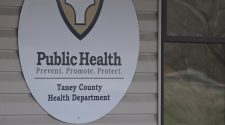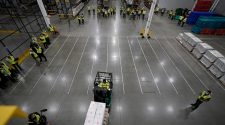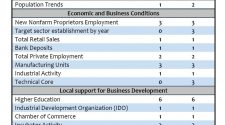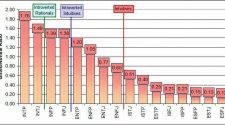Employee health and safety have always been important, but the COVID-19 pandemic has made them more important than ever. Employers are concerned about the wellness of their employees, but they must now also take a closer look at the health of their buildings.
It’s more than just the quality of air flow – it’s also temperature, humidity, energy efficiency, security, safety, comfort and more, all of which can affect occupant reassurance and productivity.
Buildings can play a critical role in helping manage factors that can impact quality of life and wellbeing, both now and in a “new normal” that will follow (whenever that may be).
Healthy buildings
First and foremost, it’s important to take a deeper look at the systems and functions currently in place. HVAC and security systems may not be optimized in many buildings.
Buildings have often been designed with a focus on efficiency rather than the occupant experience. However, the new reality will shift that focus on optimizing systems to proactively address building health while still addressing energy goals.
An intelligent building management system (BMS) – equipped with enhanced sensing and control technologies – can create an ideal environment that promotes health, comfort, productivity and efficiency.
Optimized air flow and air quality
A healthy building is one that is at low risk of contributing to undesirable health conditions in its occupants. As an important step to reaching this status, improving indoor air quality by reaching optimum air flow, humidity, temperature, pressure, filtration and sanitation is critical.
A smart HVAC system, controlled by a BMS, can help manage building health by controlling the temperature range, humidity level, pressure and fresh air intake in a building.
Optimized climate, air flow and air quality also save energy. For instance, advanced configuration or systems that use artificial intelligence and machine learning algorithms can automatically manage setpoints across the HVAC system based on factors such as occupancy, weather and time of day. Energy recovery technology requires less energy to heat or cool purified air recirculated in the building.
At the same time, the BMS will collect and analyze data from the HVAC system sensors in real time, delivering actionable insights and predictions. This information ensures that the building is running at the most energy-efficient level. It can also help prevent reactive maintenance by allowing facility managers to tackle issues before they arise – cutting the cost of expensive last-minute repairs and increasing staff efficiency.
Helping keep occupants and the building safe
While HVAC is essential, security systems are also important when it comes to helping keep the building and occupants safe as well as minimizing building owner risk. Security cameras and connected sensors situated throughout a building can provide insight into how spaces have historically been used to predict where and when occupants encounter each other or congregate.
These foot traffic patterns can inform settings for a variety of devices – like ventilation and temperature controls – to address new guidelines like social distancing guidelines and PPE compliance. Access control technology can prevent unauthorized or at-risk people from entering a building, or specific areas of the building.
Video analytics can also help ensure proper protocols are followed. Security alerts can notify facility managers to large groups or crowds forming. Video forensics can identify where in a building an occupant spent time for contact tracing. All of this can be done with limited human labor, granting staff time to focus on other critical tasks.
Cybersecurity is more important than ever
With the large number of employees working remote, and some for the foreseeable future, as well as the increasing effort to incorporate more technology to support this change in work, cybersecurity has never been more pertinent.
Providing continuous monitoring and securing critical facility applications such as your BMS and other OT assets can be challenging. Because operational systems can be easy targets for cyberattacks, they often require enhanced visibility of vulnerable entry points and industry best practices to improve resilience and help keep your network secure. It’s important for building operators to not only be able to monitor but analyze critical OT servers, workstations, virtual machines and more to prevent any potential issues and react quickly when issues do arise.
Adjusting to the new normal
When millions of people begin returning to buildings, they will expect safe and healthy environments. Building owners don’t have to choose between building health and operational security when using smart building technologies. Using the right technology and insights, they can approach the challenges with confidence.


![[Ending Soon] Prime Day's Craziest Gaming Deal: Switch, Xbox One Bundled For $400](https://newsfortomorrow.com/wp-content/uploads/2019/07/1563346770_Ending-Soon-Prime-Days-Craziest-Gaming-Deal-Switch-Xbox-One-225x125.jpg)













